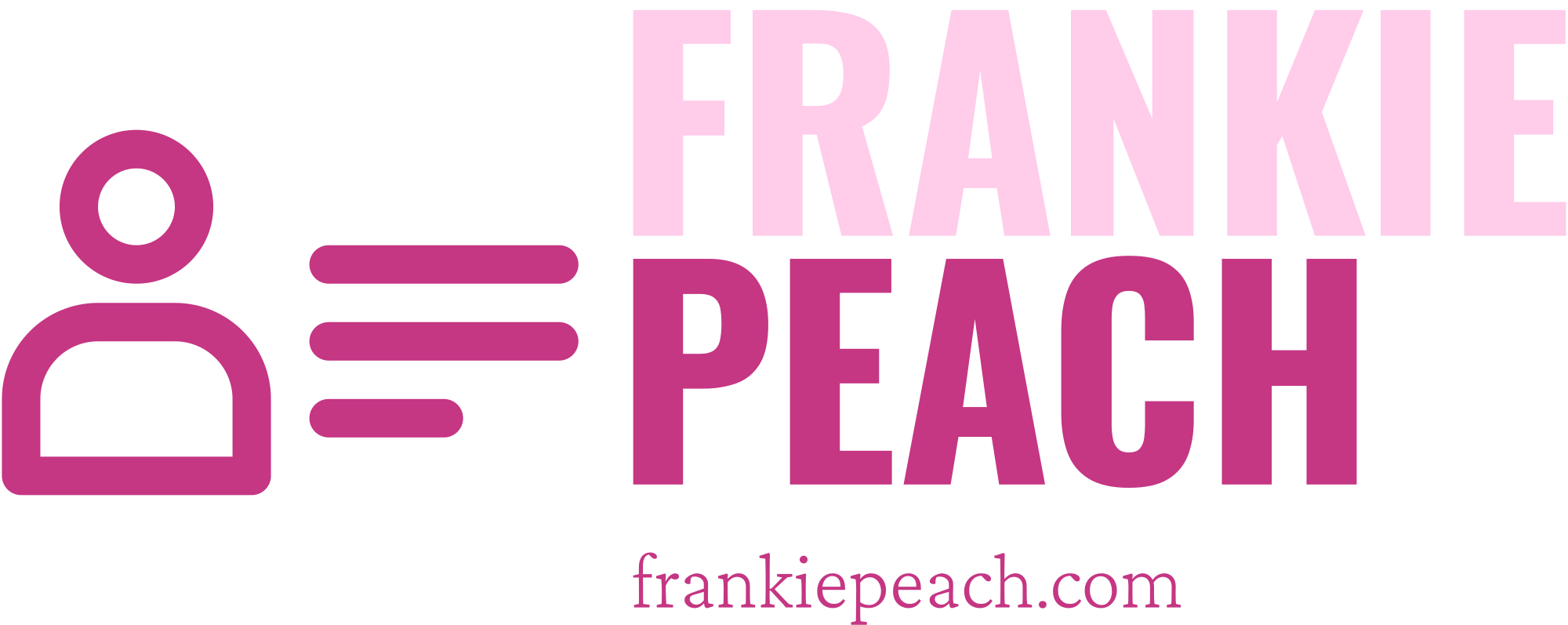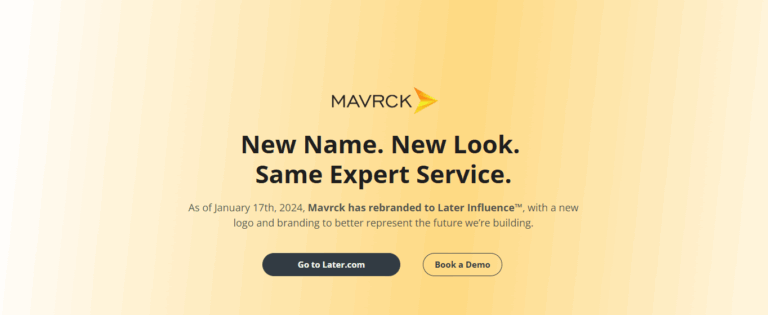Hey there, fellow marketers and brand enthusiasts! 👋 If you’re on the hunt for the crème de la crème of influencer marketing platforms in 2025, you’ve come to the right place. I’ve rolled up my sleeves, dived deep into the influencer marketing realm, and emerged with the top 29 alternatives to Mavrck. Let’s break it down, platform by platform, so you can find your perfect match without the jargon overload.
1. GRIN – The All-in-One Powerhouse
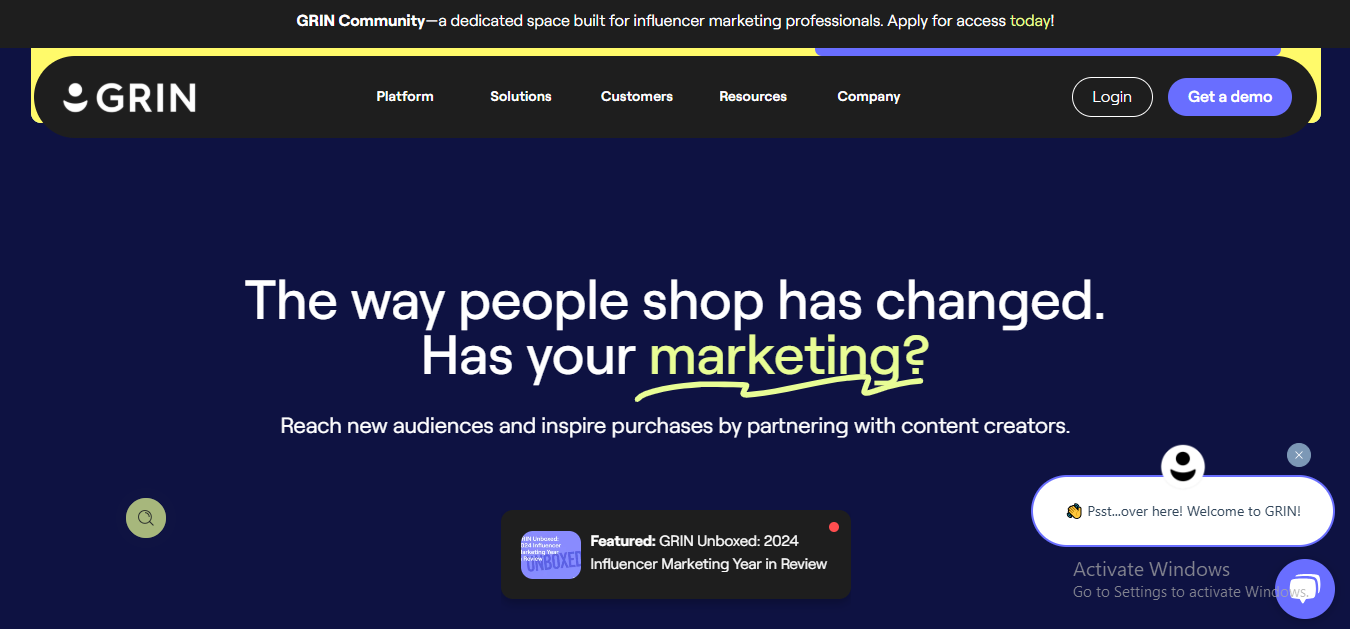
What I Loved: GRIN is like the Swiss Army knife of influencer marketing. It’s got everything: from discovering influencers to managing relationships and tracking performance. The platform’s comprehensive approach makes campaign management a breeze.
What I Didn’t Love: The sheer number of features can be overwhelming at first. It takes a bit of time to get the hang of it, but once you do, it’s smooth sailing.
Pricing: GRIN offers custom pricing based on your needs. It’s on the higher end, but the features justify the cost.
2. Influencity – The Data-Driven Dynamo
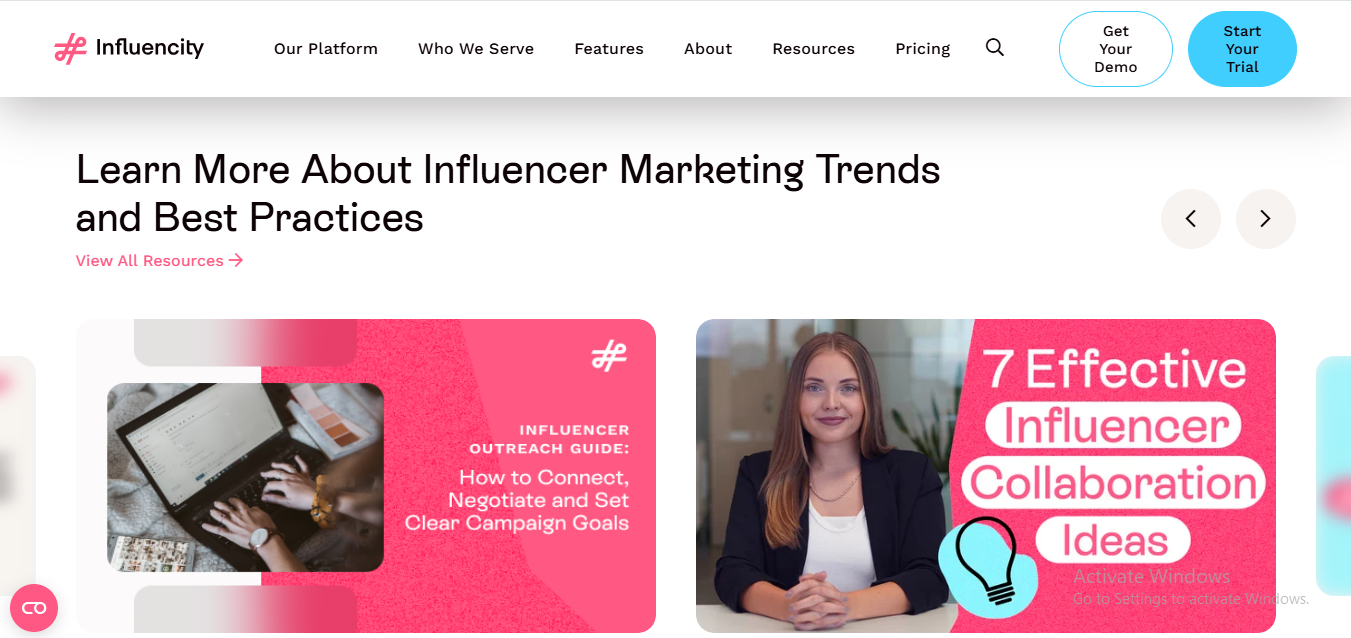
What I Loved: Influencity is a data nerd’s dream. With AI-powered tools, you can filter influencers based on your campaign needs, analyze their performance, and manage campaigns seamlessly. The platform supports TikTok, Instagram, and YouTube, giving you a broad reach.
What I Didn’t Love: The interface could be more intuitive. There’s a learning curve, but the robust analytics make up for it.
Pricing: Influencity offers various pricing tiers, catering to different business sizes. It’s flexible and scalable.
3. Hashtag Paid – The Creator Marketplace Maestro
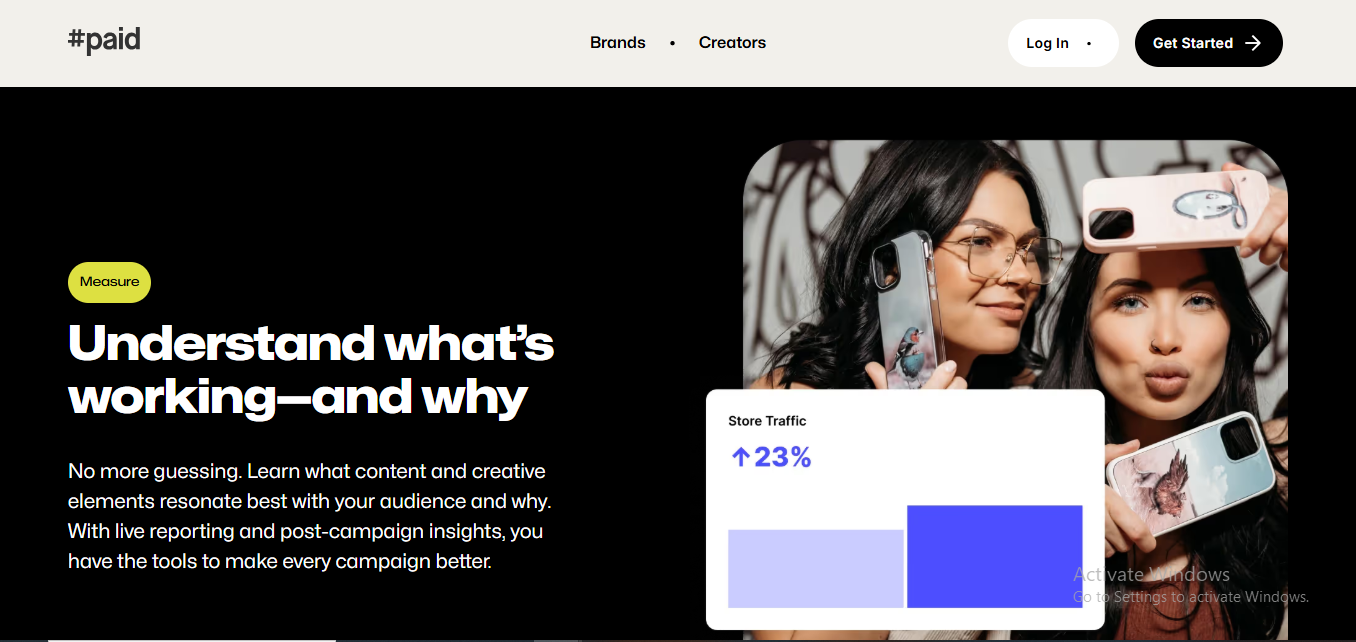
What I Loved: #paid connects brands with creators effortlessly. The platform’s standout feature is its “Handraise” tool, where creators express interest in your campaign, ensuring genuine collaborations. Plus, the dedicated support team is top-notch.
What I Didn’t Love: The platform is more suited for brands looking for long-term partnerships. If you’re after quick, one-off campaigns, it might not be the best fit.
Pricing: #paid offers custom pricing. It’s a solid investment for brands focusing on authentic creator relationships.
4. Lolly – The Commerce-First Contender
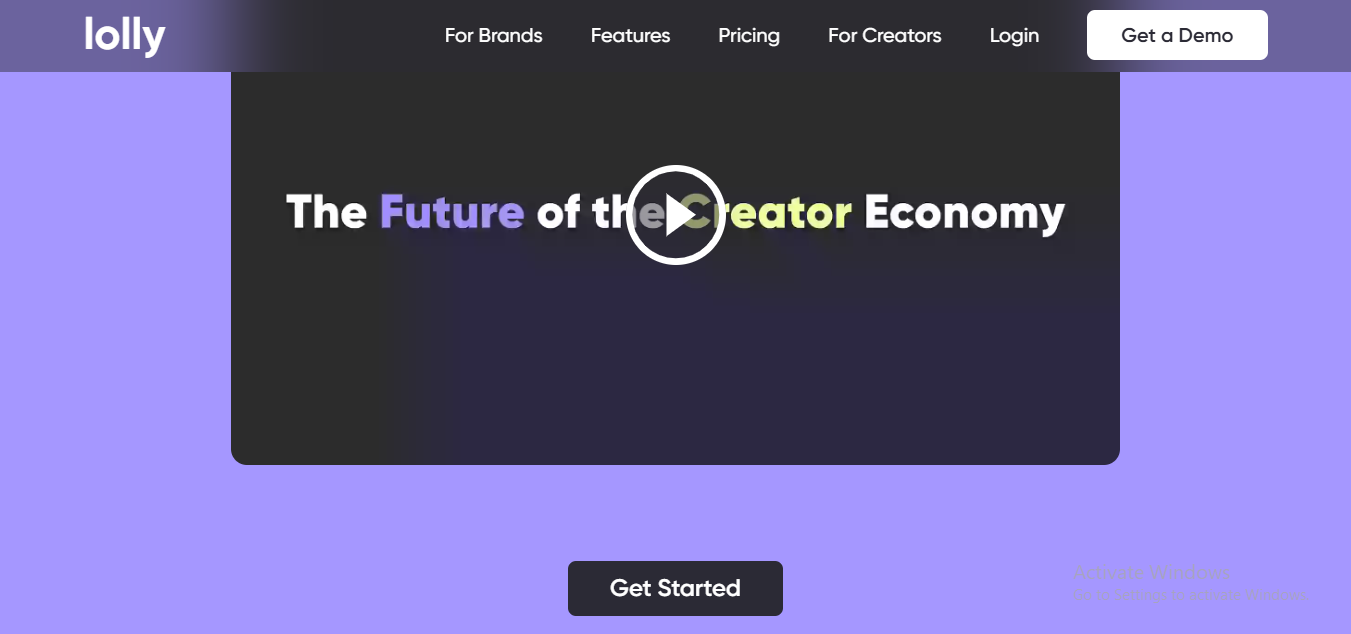
What I Loved: Lolly is all about driving sales through influencer marketing. The platform simplifies the process: set your campaign live, and watch creators come to you. The Lolly pixel is a game-changer, providing insights into where your sales are coming from.
What I Didn’t Love: It’s heavily commerce-focused. If your goal isn’t direct sales, Lolly might not align with your objectives.
Pricing: Lolly offers straightforward pricing tiers, making it accessible for brands of all sizes.
5. The Cirqle – The Performance-Driven Prodigy
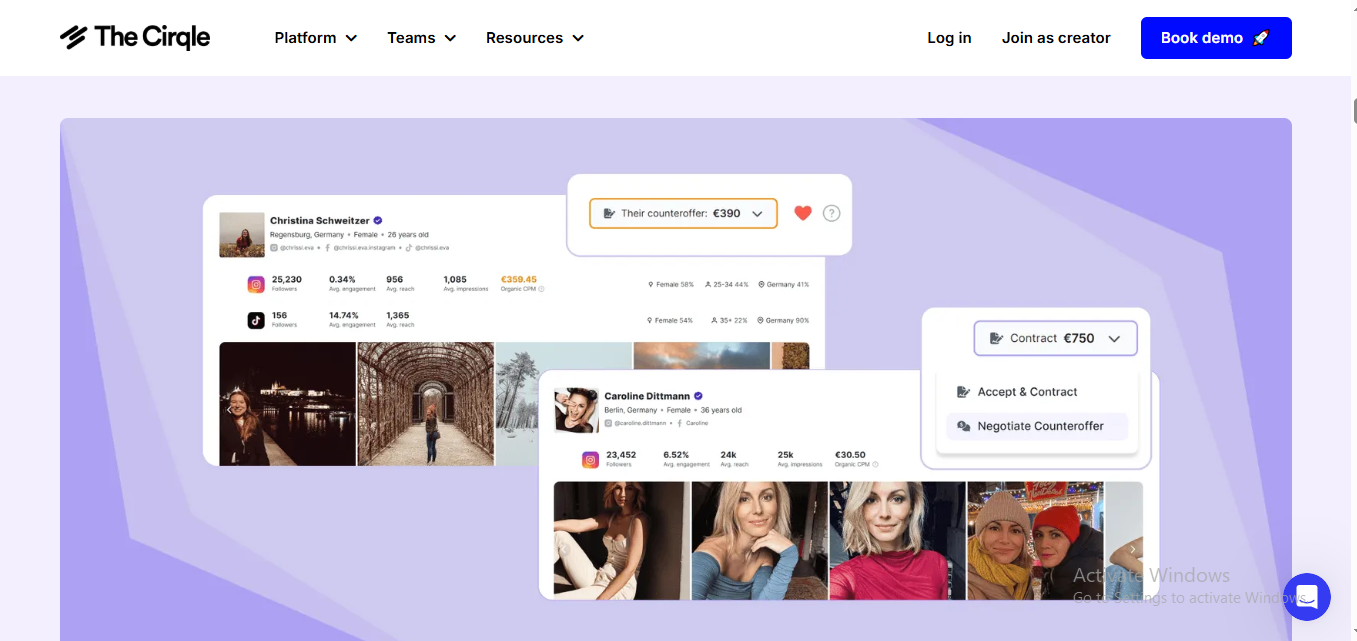
What I Loved: The Cirqle is all about results. Forget vanity metrics; this platform focuses on driving real sales. With AI-driven insights and Shopify integration, it’s perfect for e-commerce brands aiming for measurable growth.
What I Didn’t Love: The platform’s emphasis on performance might not cater to brands focusing on awareness or engagement metrics.
Pricing: The Cirqle provides custom pricing, aligning with your specific goals and scale.
6. The Influencer Room – The Relationship Builder
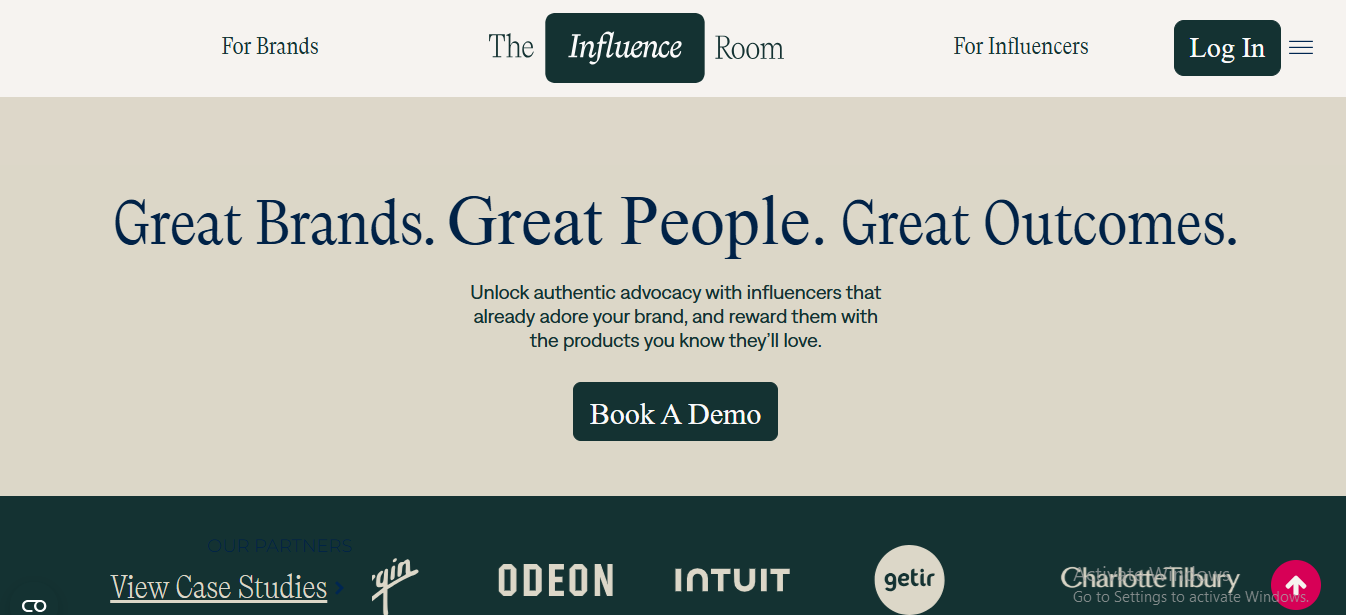
What I Loved: The Influencer Room emphasizes building genuine relationships between brands and influencers. It’s less about transactions and more about collaborations, fostering long-term partnerships.
What I Didn’t Love: The platform might lack some of the advanced analytics and automation features found in other tools.
Pricing: Pricing details are available upon request, tailored to your brand’s needs.
7. Mavrck – The OG Platform
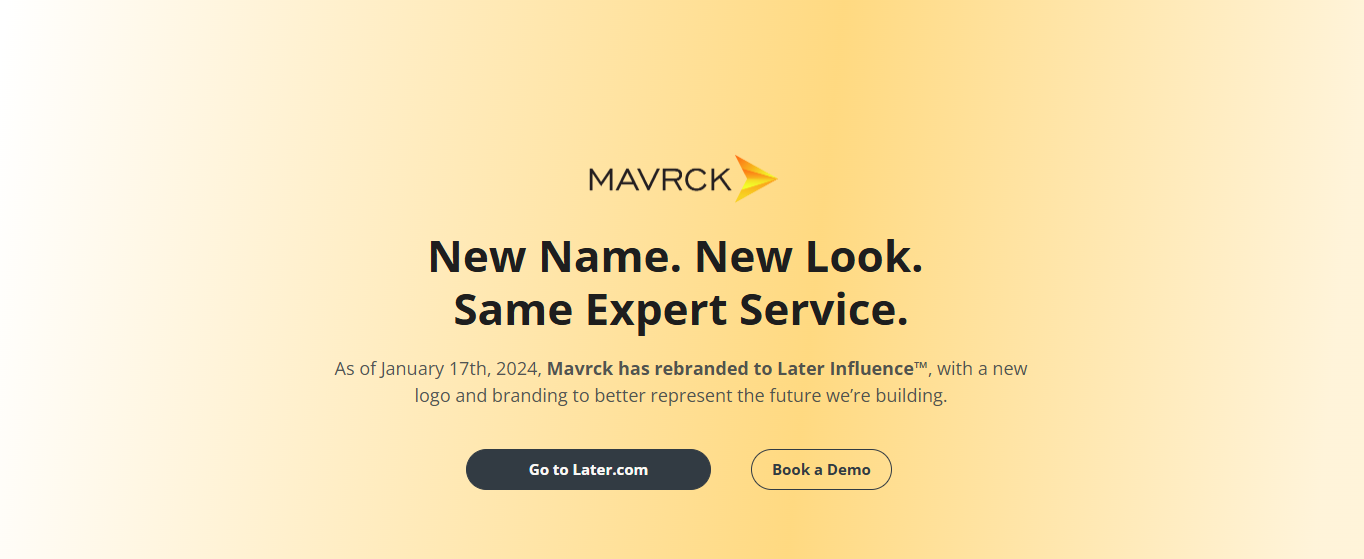
What I Loved: Mavrck offers a comprehensive suite of tools for influencer marketing, from discovery to campaign execution. It’s a solid platform with a proven track record.
What I Didn’t Love: The user interface feels a bit dated compared to newer platforms. Also, the pricing can be steep for smaller brands.
Pricing: Mavrck provides custom pricing based on your requirements.
8. Aspire.io – The Swiss Army Knife of Influencer Marketing
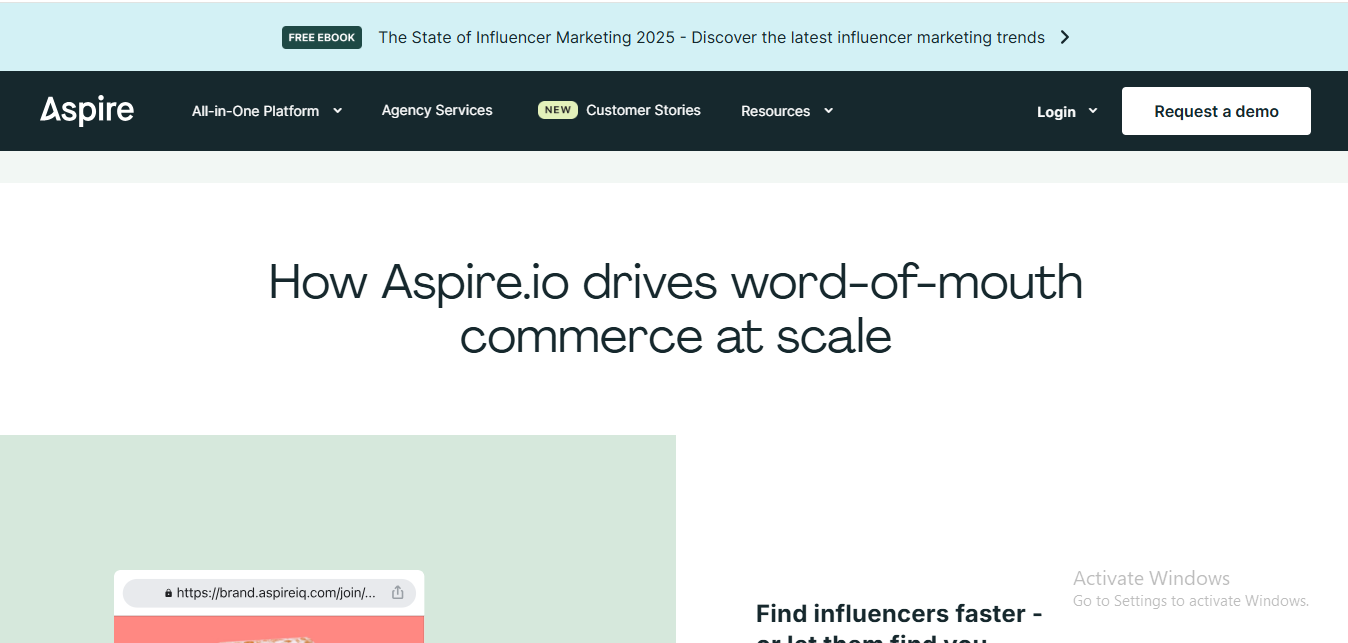
What I Loved: Aspire.io is like that friend who has everything you need. From influencer discovery to affiliate tracking, it’s got you covered. The platform’s user-friendly interface makes campaign management a breeze.
What I Didn’t Love: The pricing can be a bit steep for startups. Also, while it’s packed with features, it might be overkill if you’re just starting out.
Pricing: Starts at $1,000/month.
Best For: Brands looking for an all-in-one solution.
9. Captiv8 – The Data-Driven Powerhouse
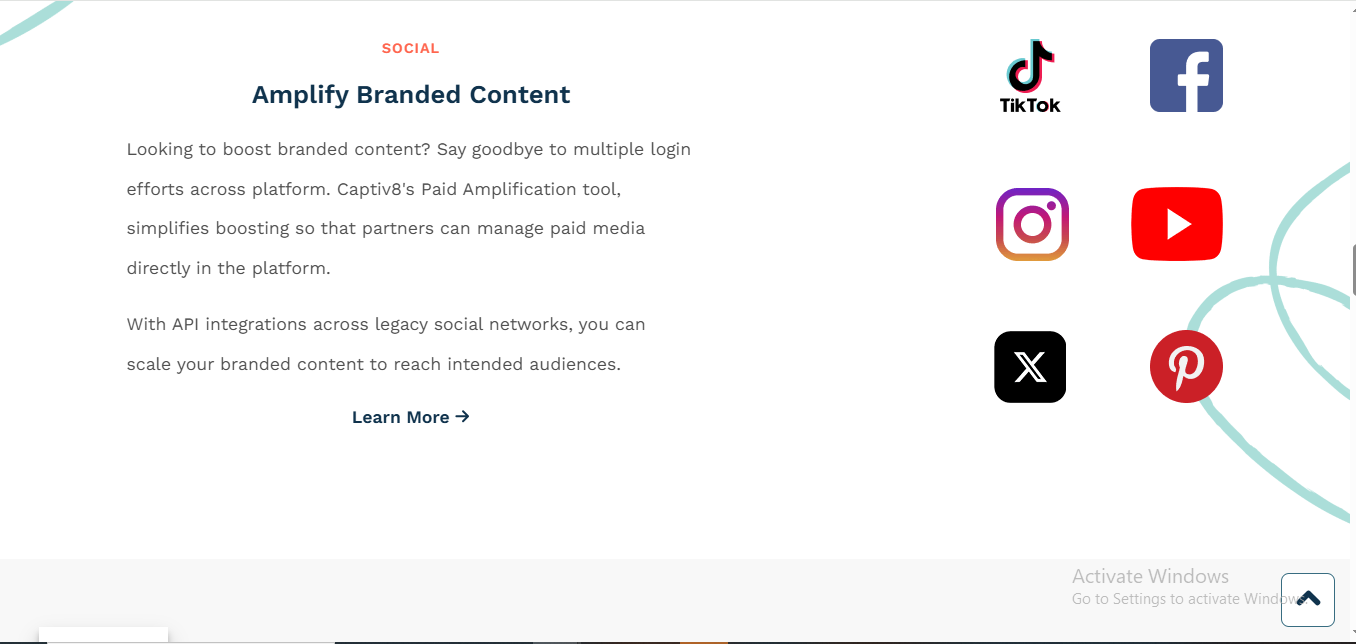
What I Loved: Captiv8 is like the Tony Stark of influencer platforms—tech-savvy and data-rich. Its AI-driven insights help you make informed decisions, and the platform supports everything from discovery to payment.
What I Didn’t Love: The learning curve is a bit steep. If you’re not a data nerd, it might feel overwhelming at first.
Pricing: Custom pricing based on needs.
Best For: Brands that love diving into data and analytics.
10. TRIBE – The Community Builder
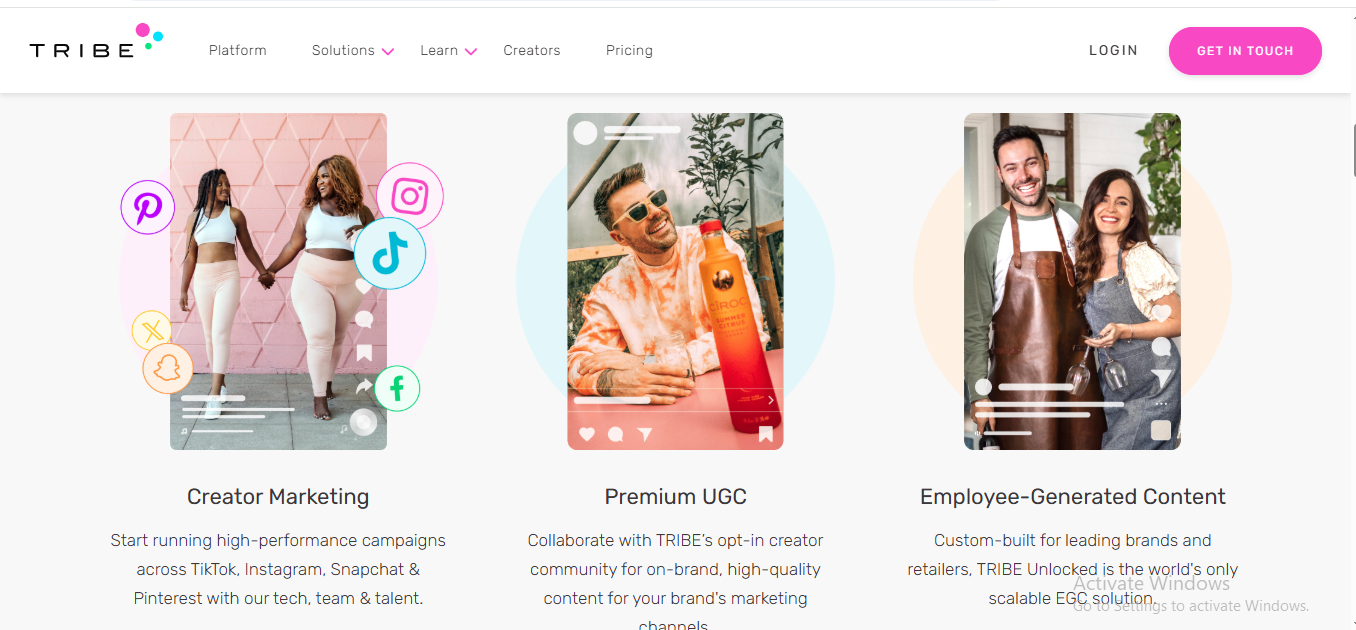
What I Loved: TRIBE is all about building genuine relationships. With a community of over 70,000 creators, it’s easy to find the right fit for your brand. The platform also offers employee-generated content solutions, which is pretty unique.
What I Didn’t Love: The platform is more focused on content creation than deep analytics. So, if you’re a numbers person, you might find it lacking.
Pricing: Starts at $299/month.
Best For: Brands looking to build authentic relationships with creators.
11. Collabstr – The Marketplace Marvel
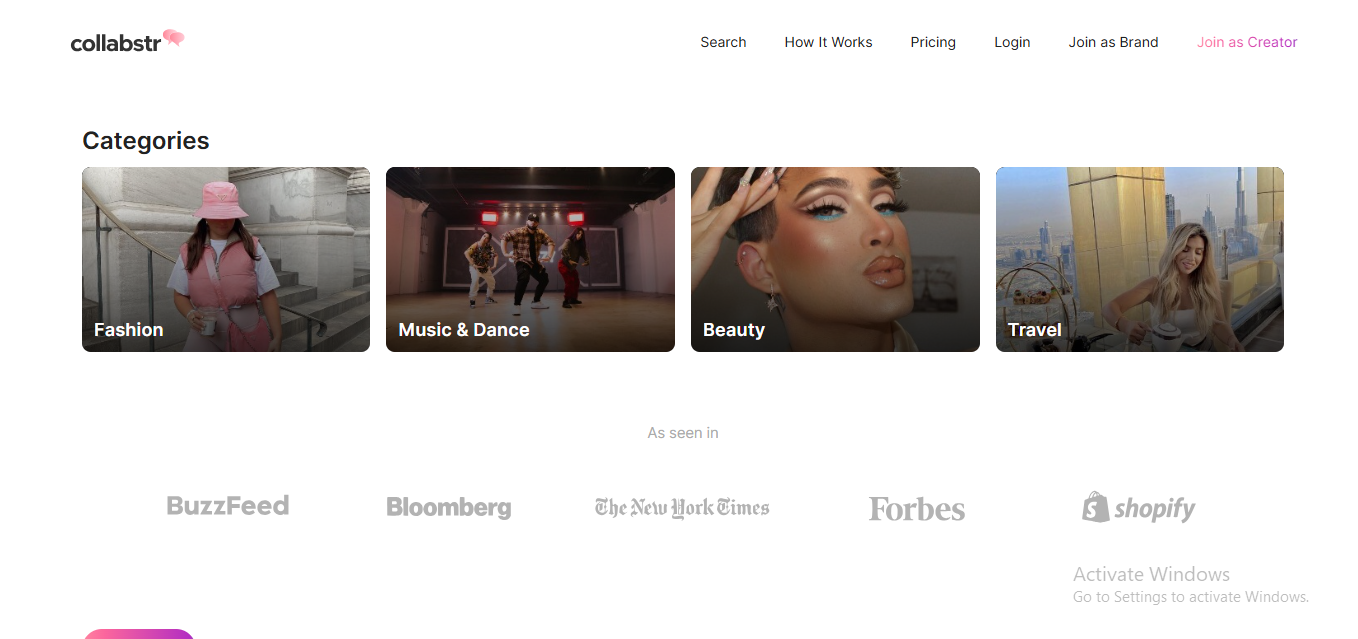
What I Loved: Collabstr is like the Amazon of influencer marketing. You can browse through a marketplace of creators, see their rates upfront, and hire them directly. It’s transparent and straightforward.
What I Didn’t Love: The platform is more suited for one-off collaborations. If you’re looking for long-term partnerships, it might not be the best fit.
Pricing: Free to browse; creators set their own rates.
Best For: Brands looking for quick, one-off collaborations.
12. Kolsquare – The European Gem
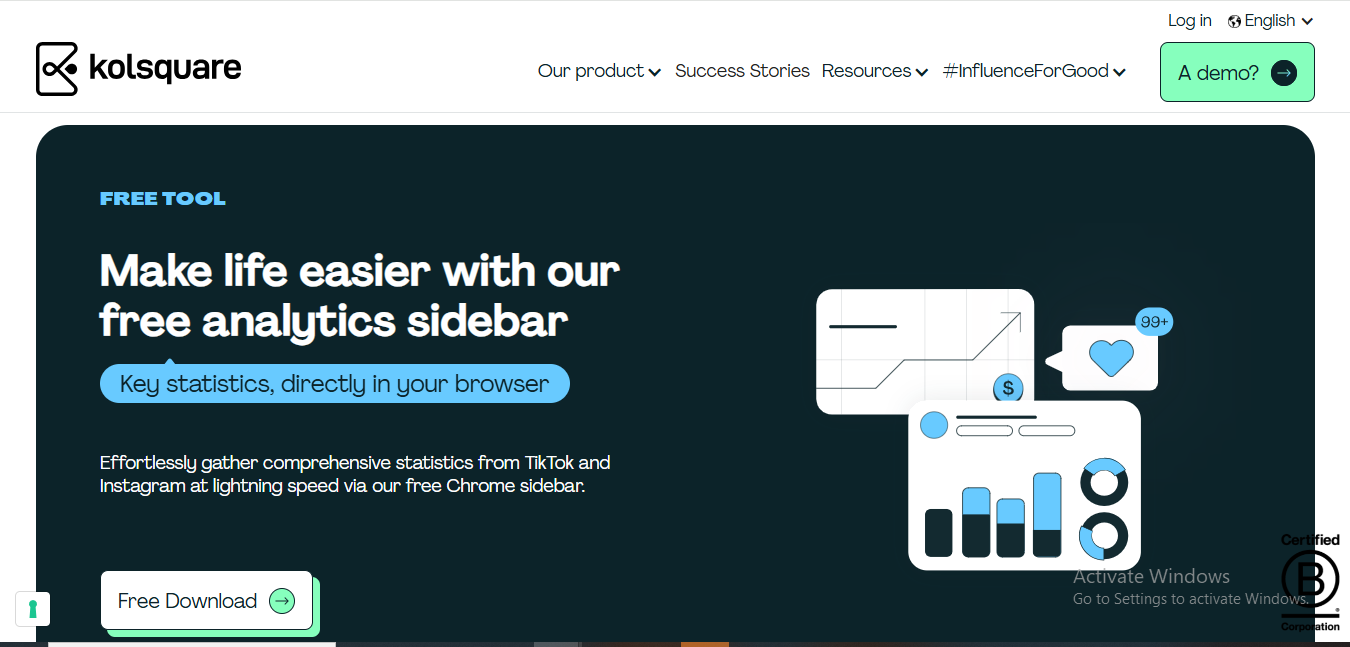
What I Loved: Kolsquare shines with its robust influencer database, especially in Europe. The platform offers detailed analytics and helps you manage campaigns seamlessly.
What I Didn’t Love: The user interface feels a bit dated. Also, it’s more tailored for the European market, so if you’re targeting other regions, it might not be as effective.
Pricing: Custom pricing based on needs.
Best For: Brands targeting the European market.
13. Popular Pays – The Content Creator’s Paradise
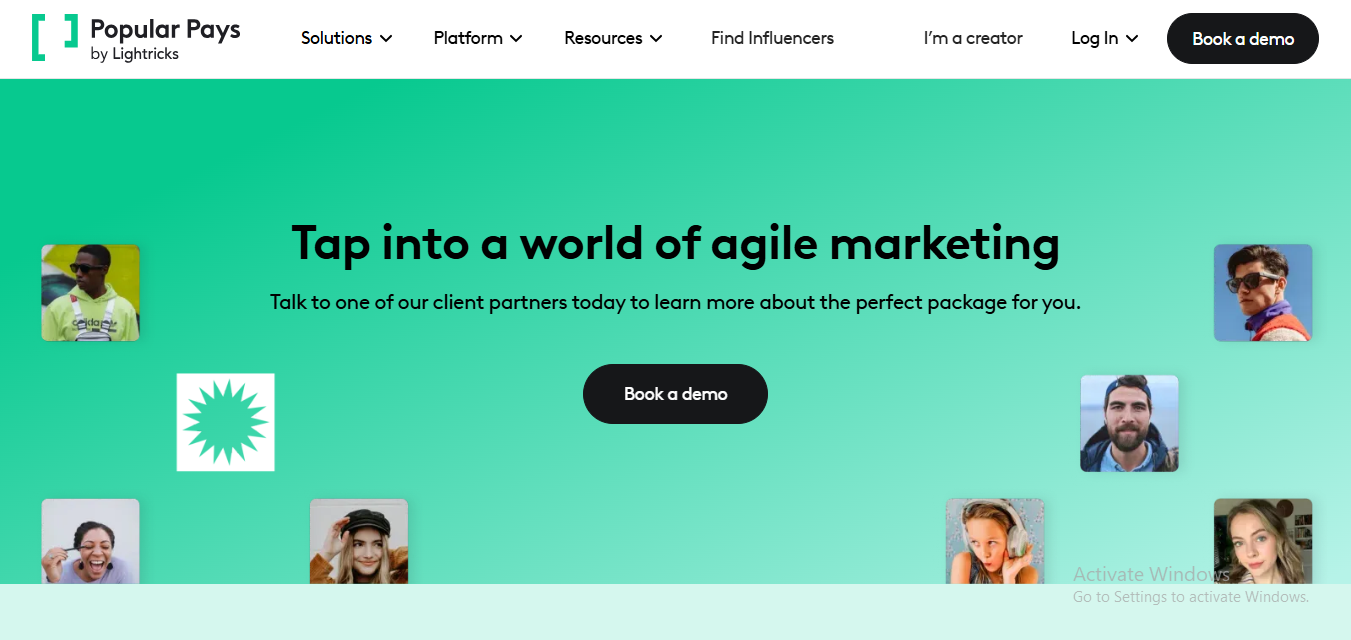
What I Loved: Popular Pays is all about content. It connects you with creators who can produce high-quality content for your brand. The platform also offers tools to manage and track your campaigns.
What I Didn’t Love: It’s more focused on content creation than influencer partnerships. So, if you’re looking for influencers to promote your brand, it might not be the best fit.
Pricing: Custom pricing based on needs.
Best For: Brands looking for high-quality content creation.
14. Braze – The Engagement Expert
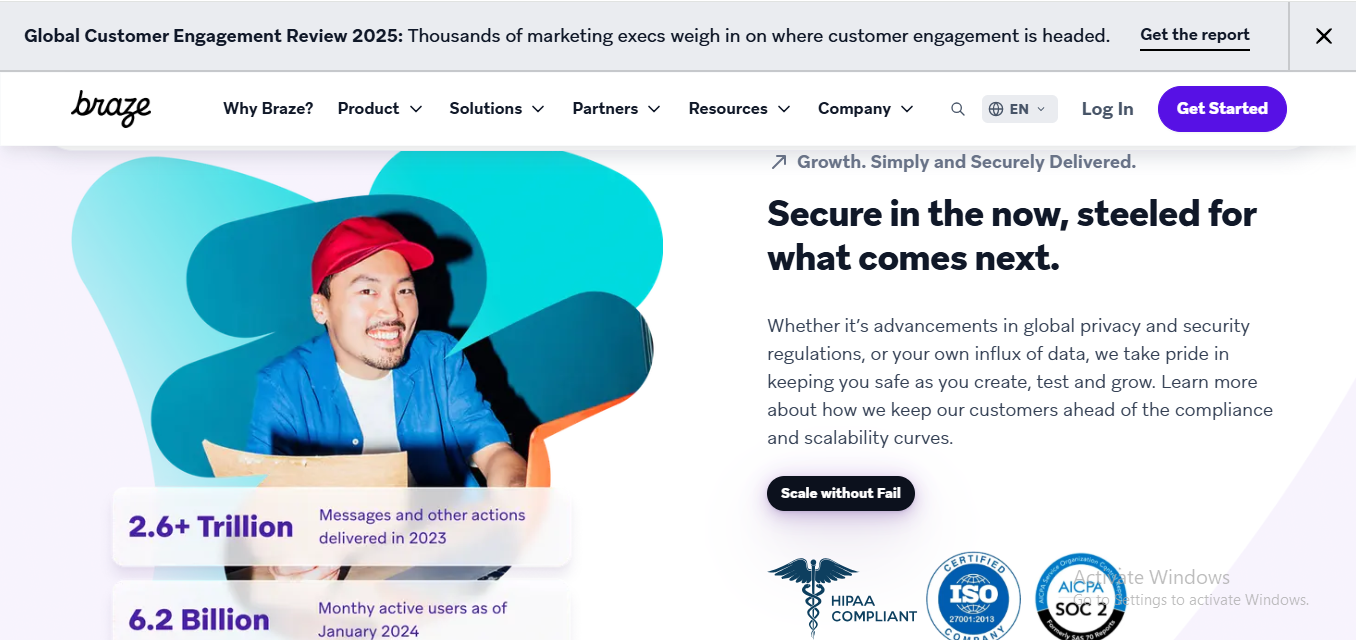
What I Loved: Braze isn’t your typical influencer platform. It’s more of a customer engagement platform that helps you personalize your marketing efforts. With features like AI-driven insights and cross-channel messaging, it’s great for building long-term customer relationships.
What I Didn’t Love: It’s not specifically designed for influencer marketing. So, if that’s your main focus, you might find it lacking.
Pricing: Custom pricing based on needs.
Best For: Brands looking to enhance customer engagement across channels.
15. IZEA
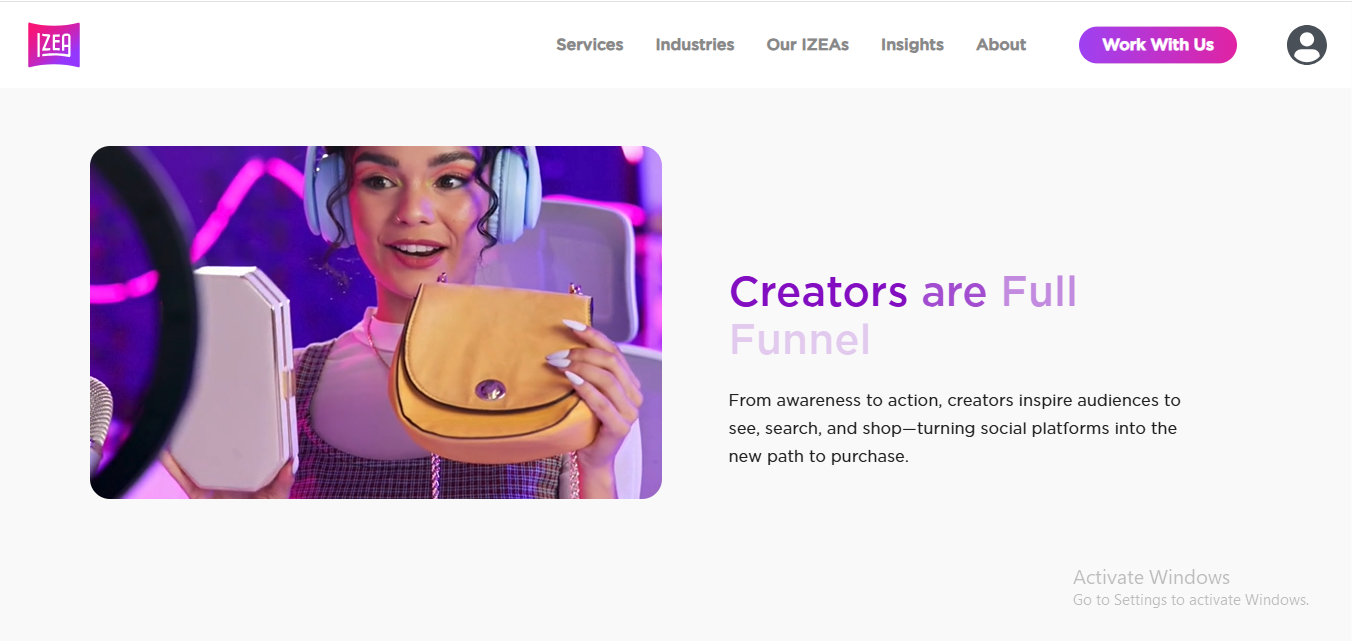
What I Liked:
- Diverse Marketplace: IZEA offers a vast marketplace connecting brands with influencers across various niches.
- Content Creation Tools: They provide tools that assist in content creation, making collaborations smoother.
What I Didn’t Like:
- Pricing Transparency: The pricing structure isn’t very transparent, which can be a bit frustrating when budgeting.
Pricing: Varies based on campaign and influencer; custom quotes are common.
Best For: Brands looking for a wide range of influencer options and integrated content tools.
16. Insense
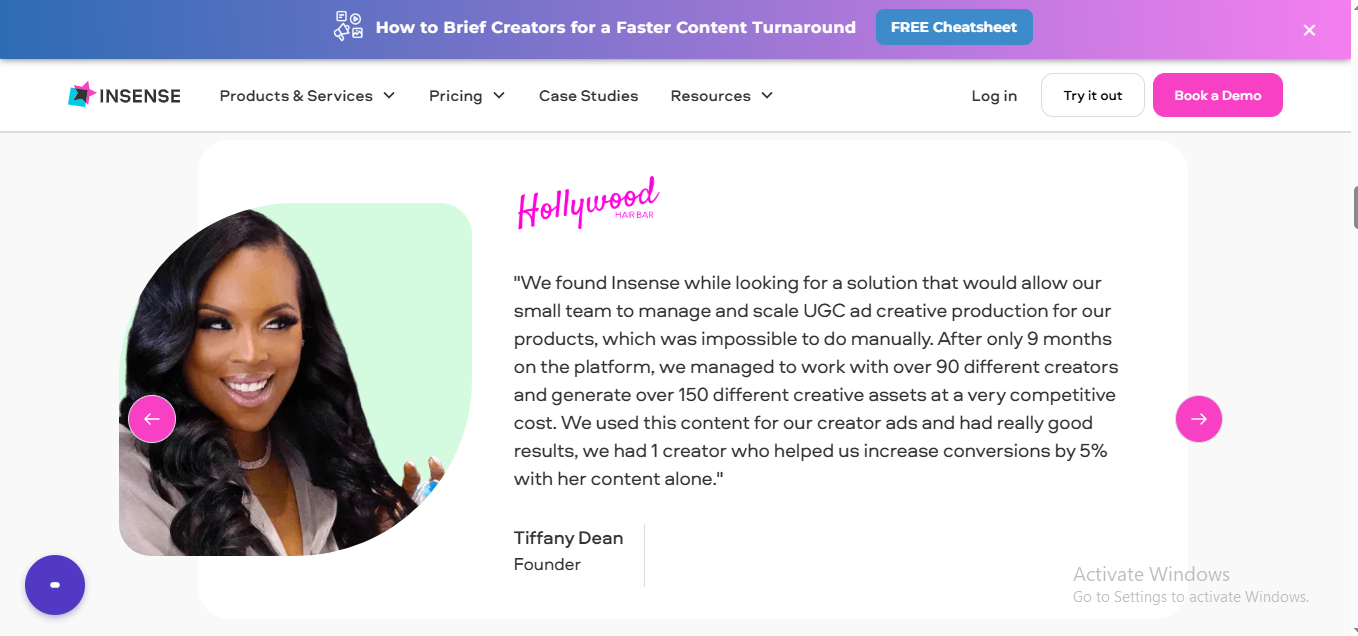
What I Liked:
- User-Generated Content (UGC) Focus: Insense excels in facilitating UGC campaigns, which are gold for authentic marketing.
- Integration with Ad Platforms: Seamless integration with platforms like Facebook Ads Manager enhances campaign efficiency.
What I Didn’t Like:
- Limited Influencer Discovery: The platform’s influencer discovery tools could be more robust.
Pricing: Starts at $400/month for basic plans; advanced plans go up to $1,300/month.
Best For: Brands focusing on UGC and looking for streamlined ad integrations.
17. Influence.co
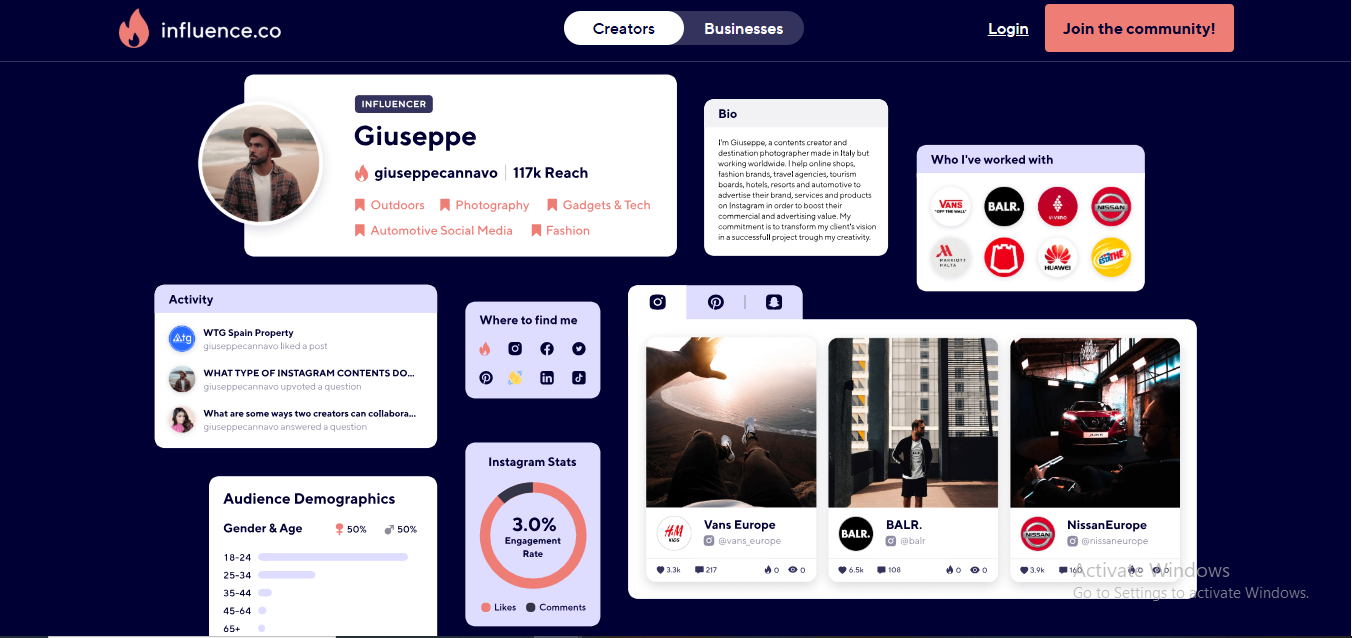
What I Liked:
- Community Vibes: It’s more than a platform; it’s a community where influencers and brands can connect organically.
- Portfolio Features: Influencers can showcase their work, making it easier for brands to assess fit.
What I Didn’t Like:
- Limited Campaign Management Tools: While great for discovery, it lacks in-depth campaign management features.
Pricing: Free basic access; premium features available at additional costs.
Best For: Brands and influencers looking for community engagement and portfolio showcases.FounderJar
18. Influencer.com
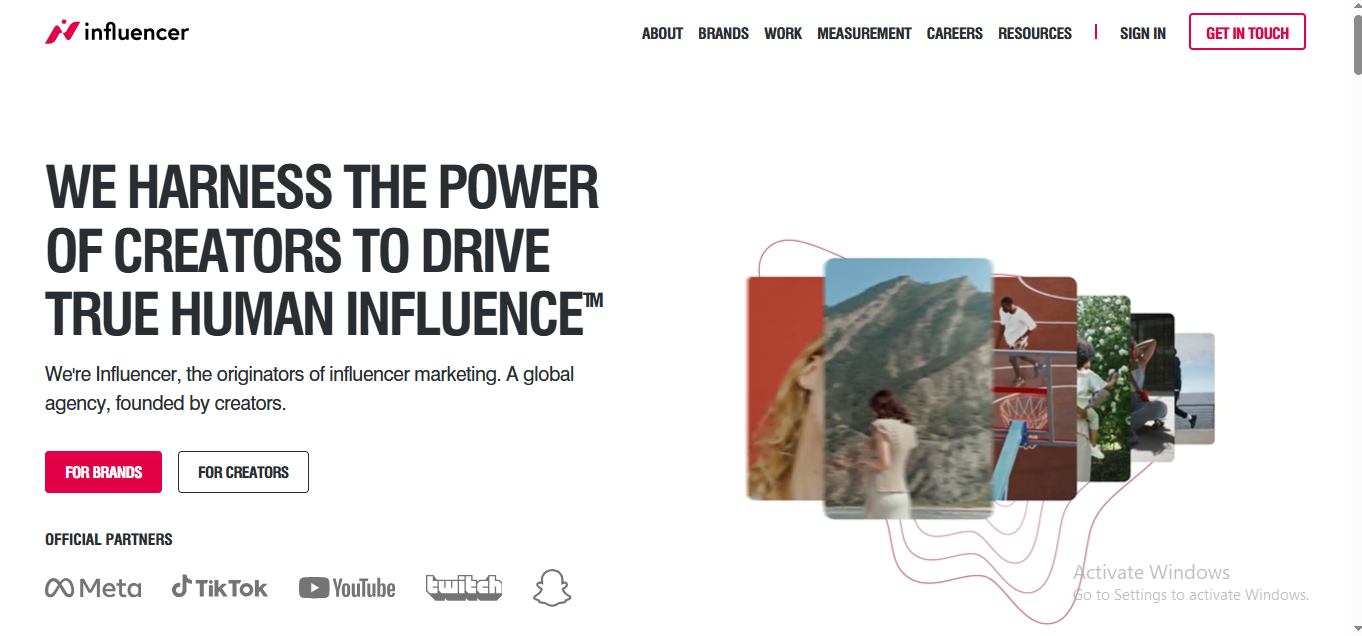
What I Liked:
- Data-Driven Insights: Offers robust analytics to measure campaign performance effectively.
- Global Reach: Access to a wide range of influencers across different regions.
What I Didn’t Like:
- Complex Interface: The platform can be a bit overwhelming for new users.
Pricing: Custom pricing based on campaign needs.
Best For: Brands seeking data-rich campaigns with a global influencer pool.
19. Later
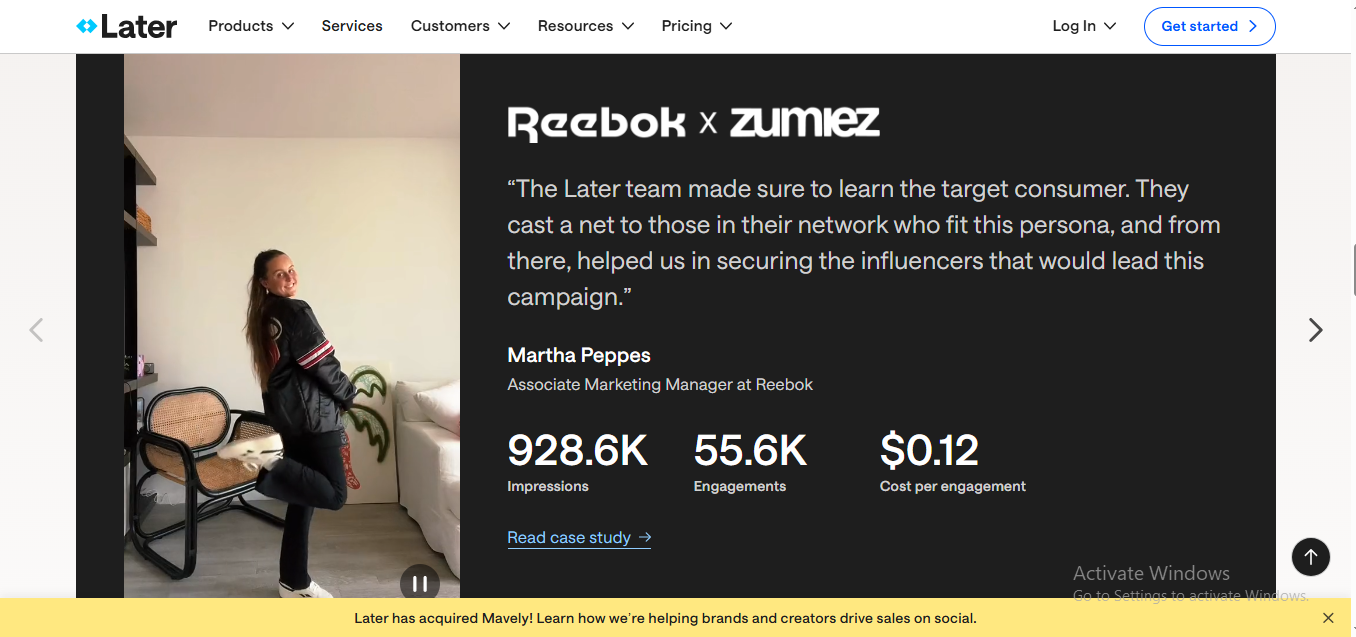
What I Liked:
- All-in-One Platform: Combines influencer marketing with social media scheduling and analytics.
- User-Friendly Interface: Intuitive design makes it easy to navigate and manage campaigns.Insense
What I Didn’t Like:
- Limited Influencer Discovery: While great for management, discovering new influencers can be challenging.
Pricing: Varies based on features; social media management plans start at $18/month.
Best For: Brands looking for a comprehensive tool that handles both influencer campaigns and social media management.
20. SHOUT Agency
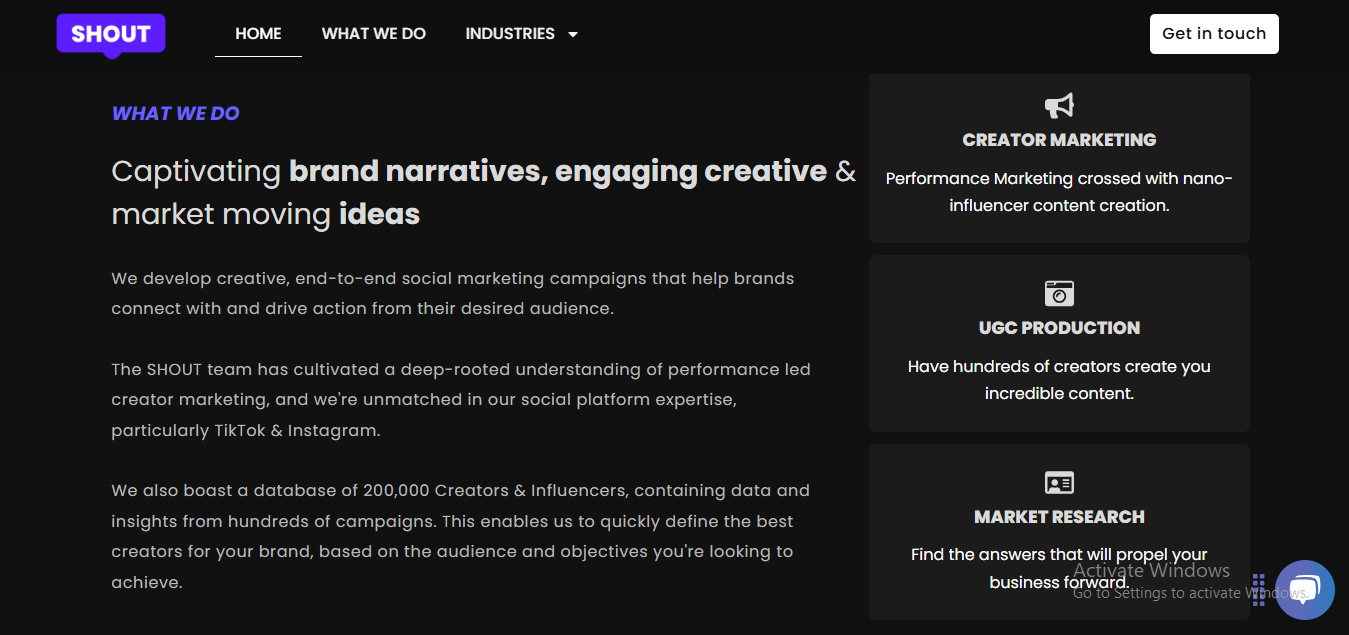
What I Liked:
- Nano-Influencer Focus: Specializes in campaigns with nano-influencers, offering high engagement rates.
- Creative Services: Provides end-to-end campaign management, including content creation.
What I Didn’t Like:
- Less Suitable for Large-Scale Campaigns: Best for targeted, smaller campaigns rather than massive outreach.
Pricing: Custom pricing based on campaign scope.
Best For: Brands aiming for authentic engagement through nano-influencer collaborations.
21. Klear
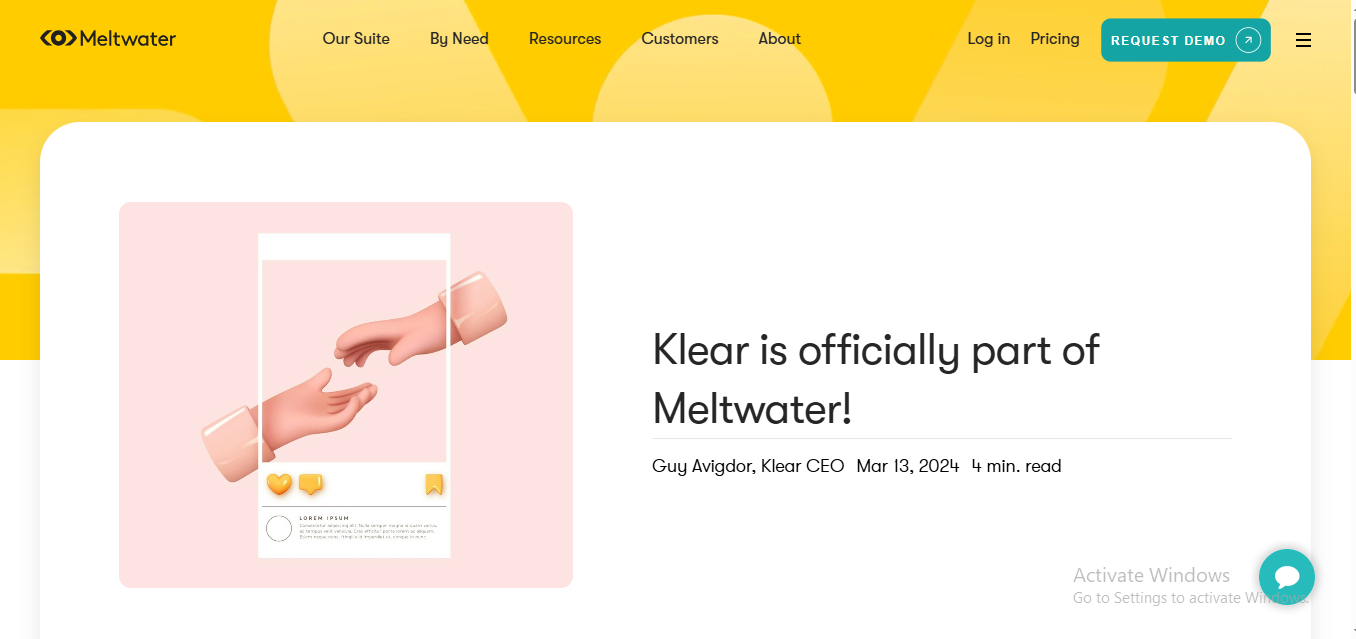
What I Liked:
- Advanced Analytics: Offers deep insights into influencer performance and audience demographics.
- Comprehensive Influencer Profiles: Detailed profiles help in making informed collaboration decisions.
What I Didn’t Like:
- Pricing: Can be on the higher side, which might not suit smaller businesses.
Pricing: Custom pricing; typically tailored for enterprise clients.
Best For: Brands requiring in-depth analytics and comprehensive influencer data.
22. Brandbassador
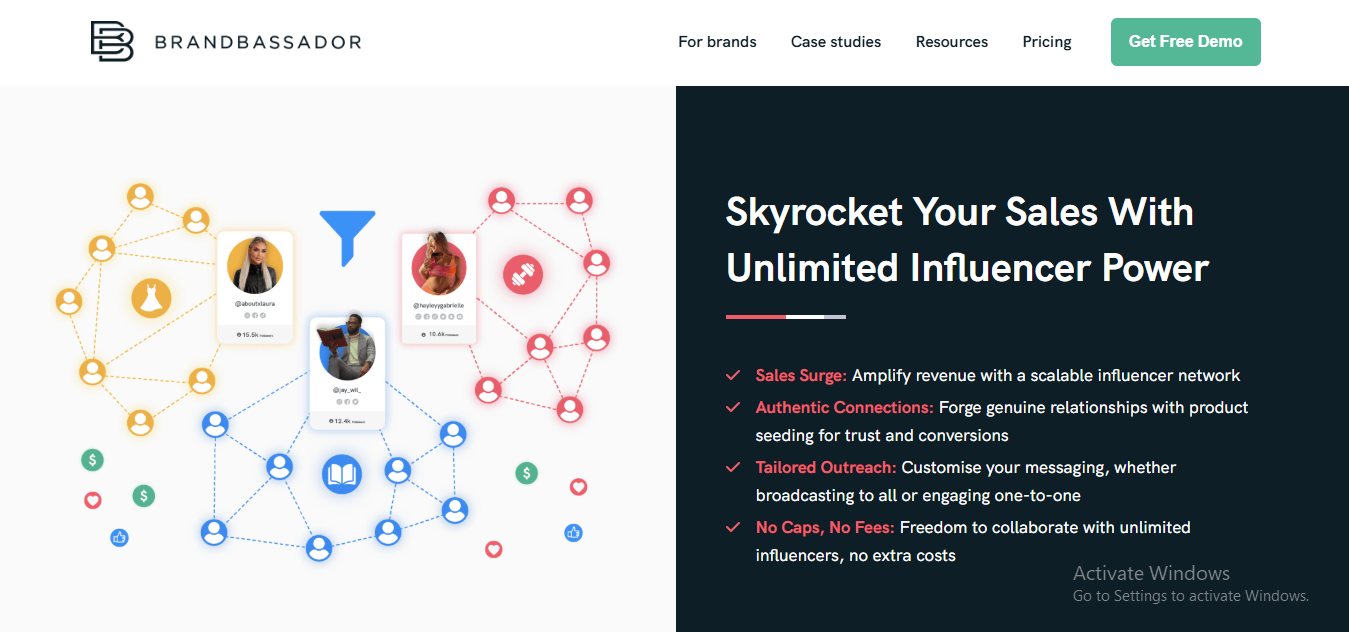
What I Loved:
Okay, this one surprised me. Brandbassador is like that cool, low-key cousin of Mavrck that actually gets what modern brands need. It’s super focused on building brand ambassador programs rather than just “run this campaign and dip” type deals. Think of it as more of a community-builder than a transactional platform.
- You can create missions (aka micro-tasks) for your ambassadors to do: post content, refer friends, review products—you name it.
- Killer gamification features. Your influencers legit feel like they’re leveling up in a game.
- Dashboard’s smooth and hella intuitive.
What I Didn’t Like:
- Influencer discovery is just okay—don’t expect a TikTok-stalking, hyper-specific filtering system.
- Might not suit huge enterprise-level brands needing super in-depth analytics.
Pricing:
Starts at around $300/month. Custom quotes for bigger peeps.
Verdict: Best for DTC brands who want to build a loyal squad, not just run one-off collabs.
23. Shout UGC
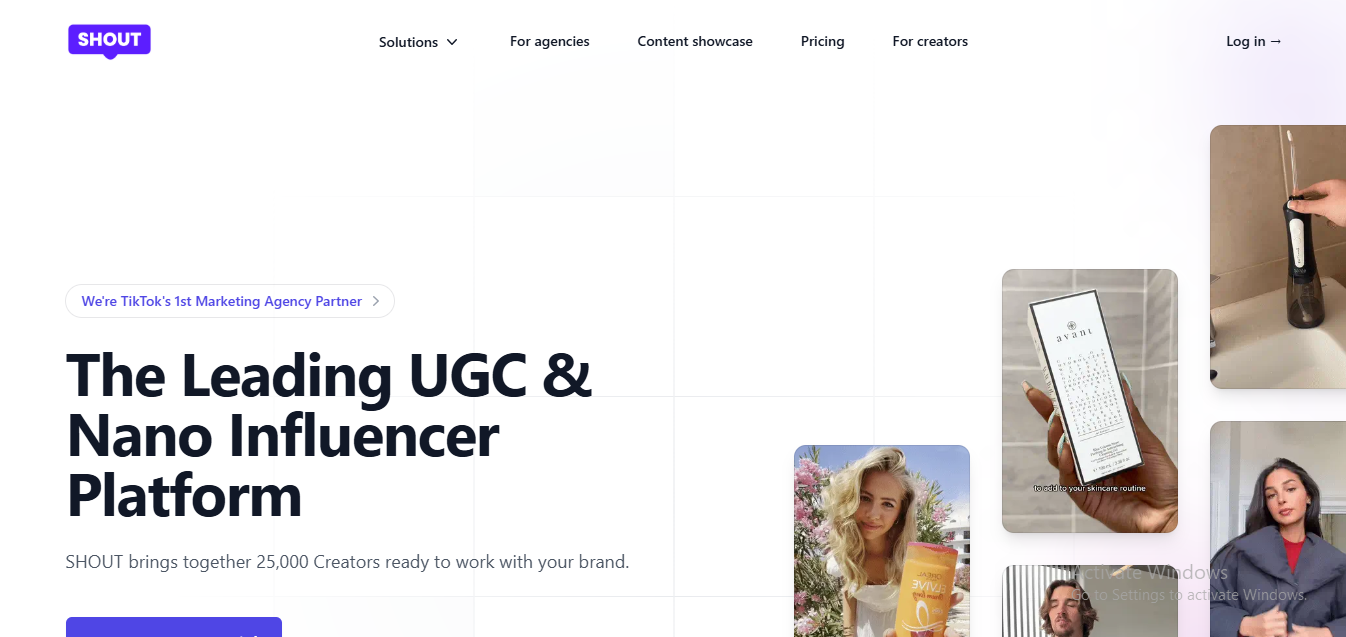
What I Loved:
Shout UGC feels like it was made for the TikTok generation. This platform leans heavily into user-generated content (UGC), and honestly? That’s where the magic is these days. You can post a campaign brief and get real creators to shoot dope, on-brand content without paying Kim K prices.
- Super affordable for startups and indie brands.
- You can get UGC from nano and micro-influencers without begging or bartering.
- Direct creator messaging—no middlemen headaches.
What I Didn’t Like:
- Not ideal for full-blown influencer marketing campaigns—this is very UGC-specific.
- No built-in ad management features.
Pricing:
Pay-per-project style. Starts as low as $50 for basic content tasks.
Verdict: For scrappy brands that want clean, relatable content over mega metrics.
24. CreatorIQ
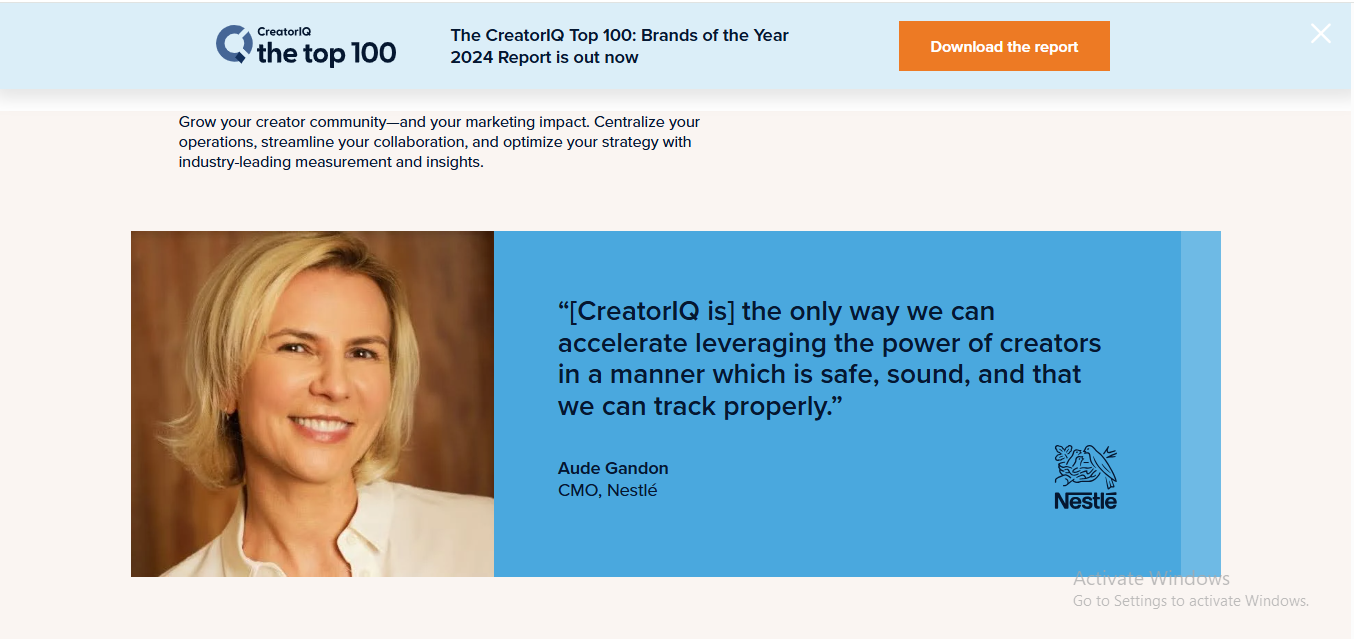
What I Loved:
Whew, okay—CreatorIQ is for the big dawgs. This thing is STACKED. Think of it as the Salesforce of influencer marketing. It’s enterprise-level, hella data-driven, and ideal if you’re managing campaigns with hundreds (or thousands) of creators.
- API integrations out the wazoo.
- Analytics so deep you could swim in ‘em.
- AI-powered influencer discovery. I found creators I didn’t even know existed.
What I Didn’t Like:
- Steep learning curve. You’ll need a lil onboarding time.
- Definitely not budget-friendly for small teams.
Pricing:
Enterprise-level. If you gotta ask, you probably can’t afford it 😅
Verdict: For agencies and mega brands who want full control, full data, full everything.
25. InfluencerMarketing.ai
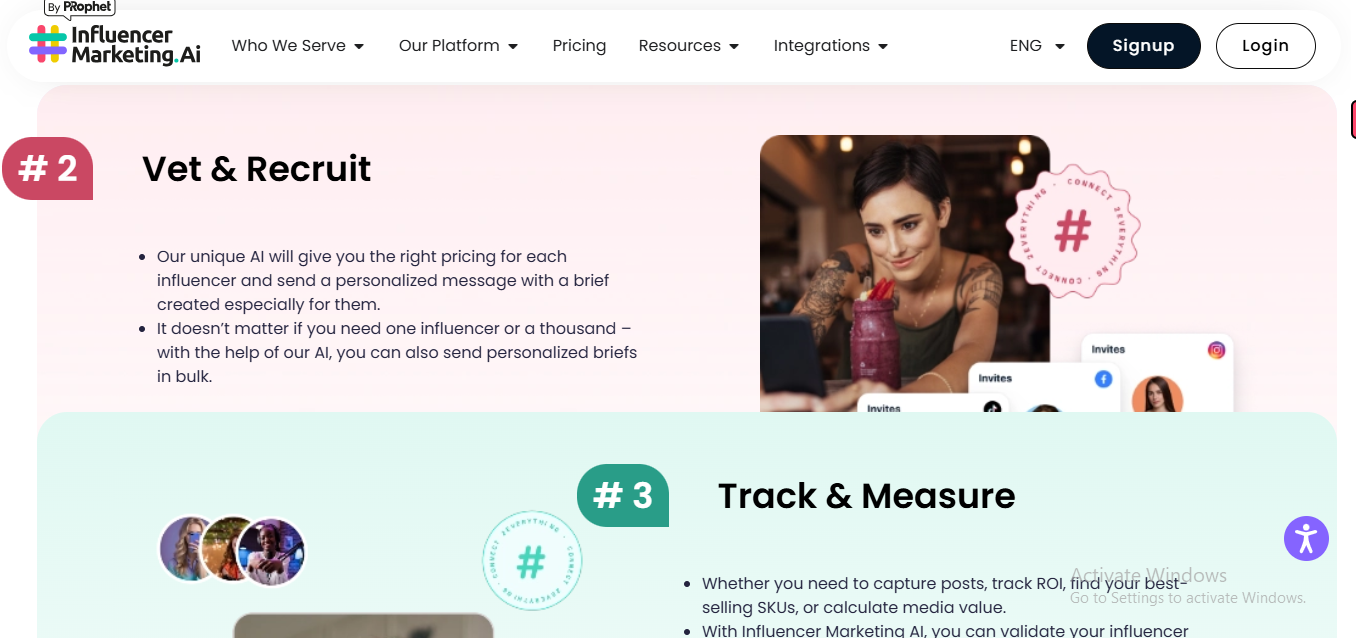
What I Loved:
This one’s like ChatGPT met an influencer campaign manager and had a smart lil baby. InfluencerMarketing.ai is all about automation. It’s got AI baked into every step—finding creators, predicting engagement, even helping write briefs. 🤯
- You get influencer scoring based on audience fit, fake follower detection, and engagement rate.
- Built-in campaign performance analytics and ROI tracking.
- Their AI chat assistant helps manage everything (hello, 2025 vibes).
What I Didn’t Like:
- UI could be a bit prettier—kinda feels like a dev team built it without a designer.
- The database is strong but still growing—might not find super niche creators.
Pricing:
Starts around $199/month. Decent value for all the AI sauce.
Verdict: For tech-savvy marketers who want to run smart campaigns without lifting a finger.
26. Traackr
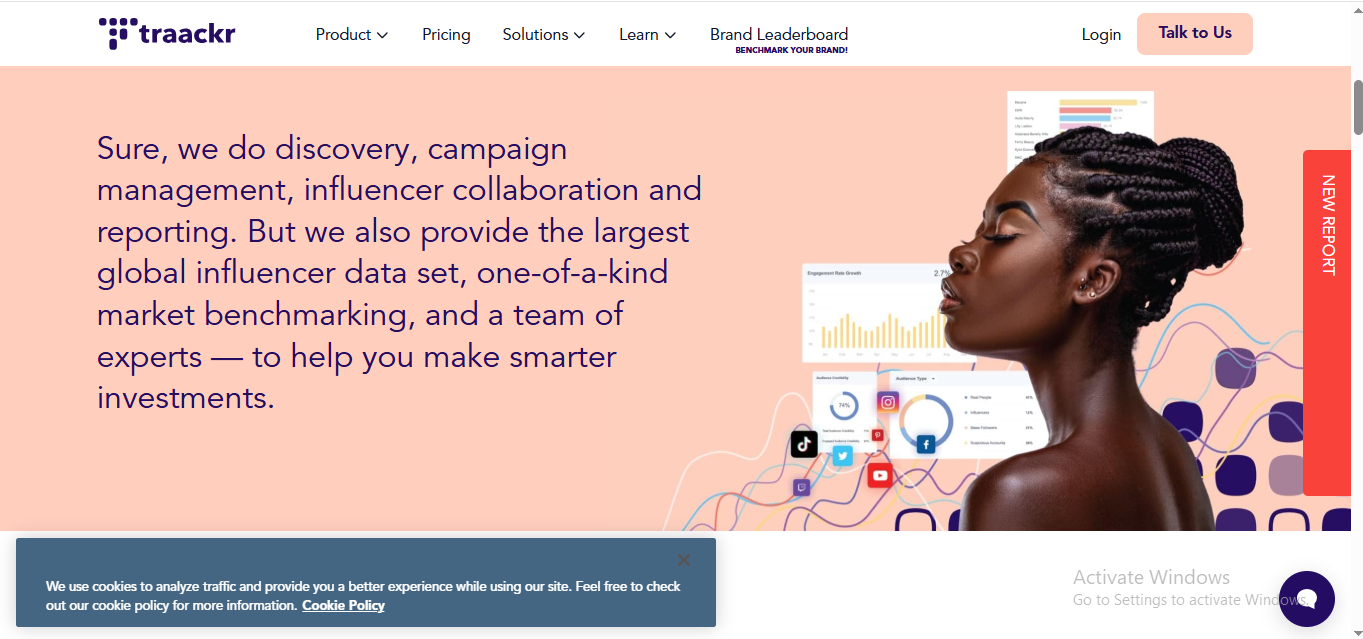
What I Loved:
This one’s kinda like CreatorIQ’s nerdy older sibling. Traackr is less about content vibes and more about influence intelligence. If you’re all about metrics, ROI, and precision over pretty pictures, this is your jam.
- Performance-based influencer rankings (not just “OMG they have 1M followers”).
- Spend efficiency dashboards—like, how much did that collab really pay off?
- Great for compliance and brand safety, too. They don’t mess around.
What I Didn’t Like:
- Very data-heavy—can be a little overwhelming if you’re more into storytelling than spreadsheets.
- Doesn’t feel like the most creative platform design-wise.
Pricing:
Also enterprise-focused. You’ll be sliding into DMs for a quote.
Verdict: Best for brands who treat influencer marketing like Wall Street treats stocks.
27. Upfluence
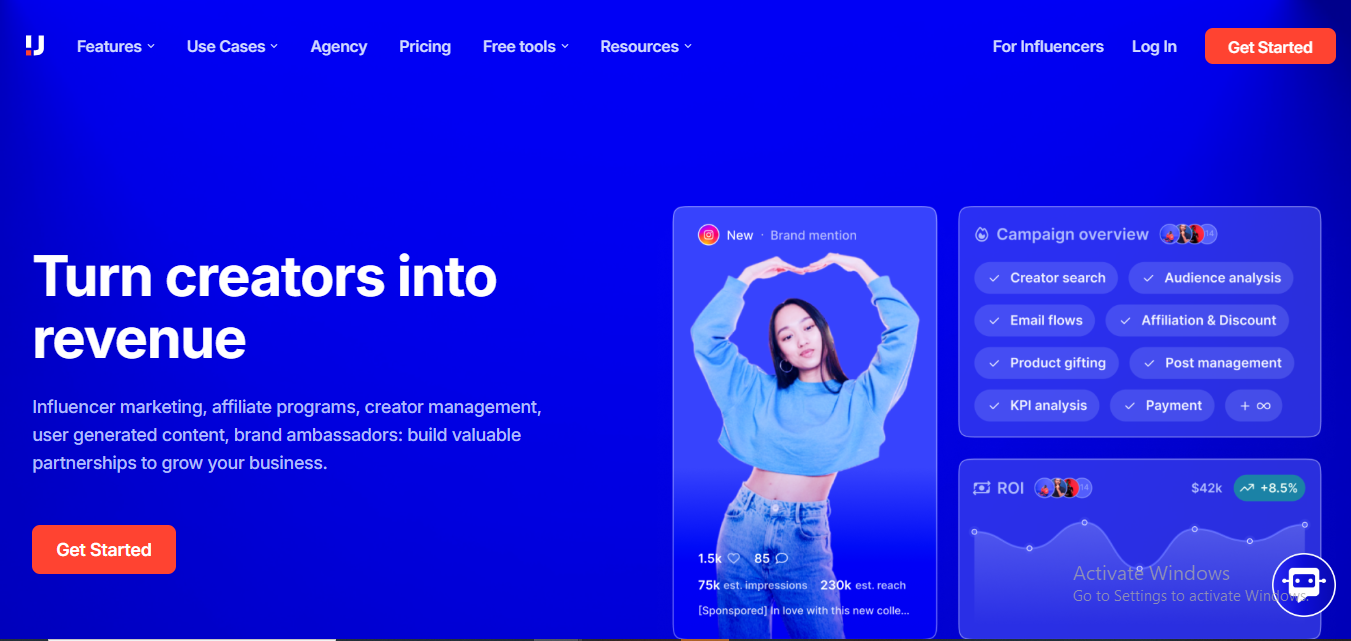
What I Loved:
This one felt like a lovechild of Shopify and LinkedIn for influencers. It’s got all the pro features you’d expect from a high-end tool, but it’s still super usable. Upfluence is pretty stacked when it comes to creator discovery, email outreach, AND campaign tracking—all in one dashboard.
- Searchable database with 5M+ influencers across YouTube, Insta, Twitch, TikTok, you name it.
- I loved the “Live Capture” tool—it helps find influencers already interacting with your brand. It’s like finding out your crush already likes your posts 😎
- Email integration is—no jumping between apps or copying spreadsheets.
What I Didn’t Like:
- Analytics are good but not as deep as some enterprise tools like Traackr or CreatorIQ.
- There’s a bit of a learning curve when you’re starting. Like, not rocket science, but not plug-and-play either.
Pricing:
Starts around $795/month. Big budget brands only. They do offer custom pricing if you’re an agency.
Verdict: If you’ve got a decent budget and need a robust influencer management hub, this one’s worth a hard look.
28. Meltwater (formerly Klear)
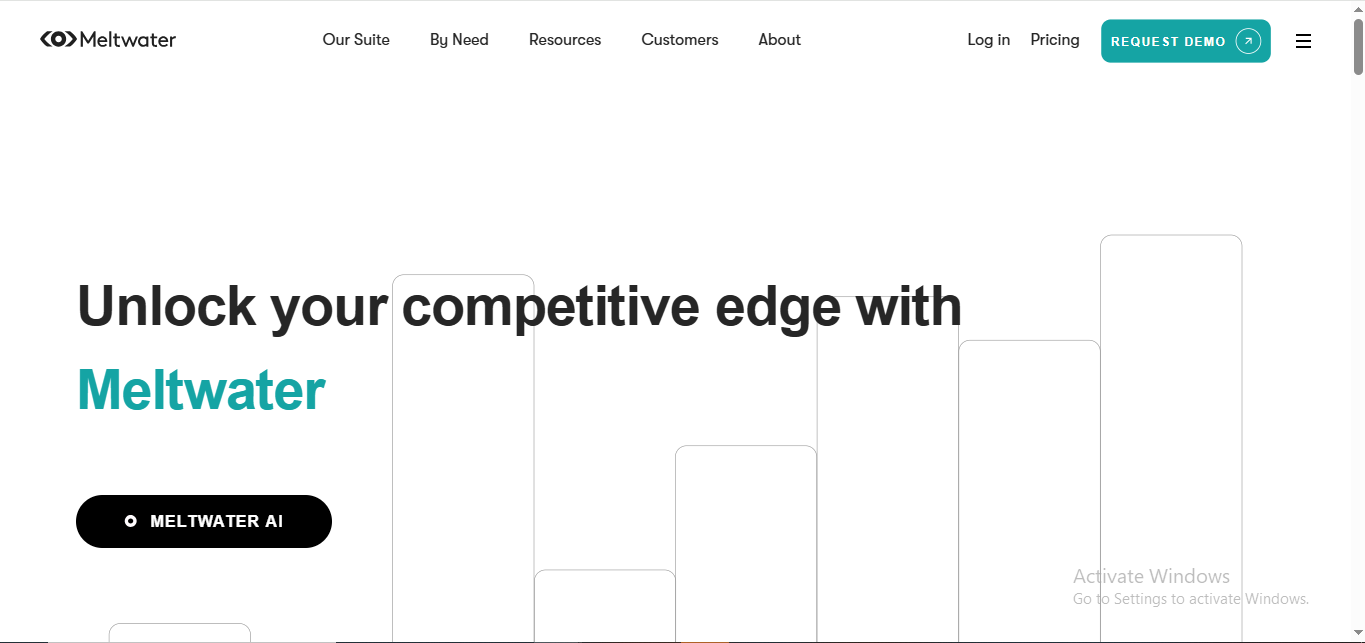
What I Loved:
Okay, this one’s a beast. Meltwater is like the Tesla of influencer platforms—it looks slick, runs smooth, and has all the smart tech behind it. It’s not just an influencer platform, though—it’s also a media monitoring and PR platform, so it gives a full 360-view of how your brand’s doing online.
- Built-in influencer CRM and campaign tracking with serious reporting features.
- AI-backed search and performance insights—think predictive analytics, not just spreadsheets.
- The “network analysis” feature is cool AF—it shows you which influencers hang in the same social circles (yes, really).
What I Didn’t Like:
- It’s a lot. Like, I had dashboard fatigue after 20 minutes. Not for the faint of heart or small budgets.
- You won’t really get that cozy, creator-collab kinda vibe. It’s more strategy and numbers than community.
Pricing:
Definitely enterprise. Expect custom quotes and yearly contracts. 💸💸💸💸
Verdict: For PR-forward brands or agencies who want the whole digital footprint + influencer marketing under one roof.
29. The Social Cat
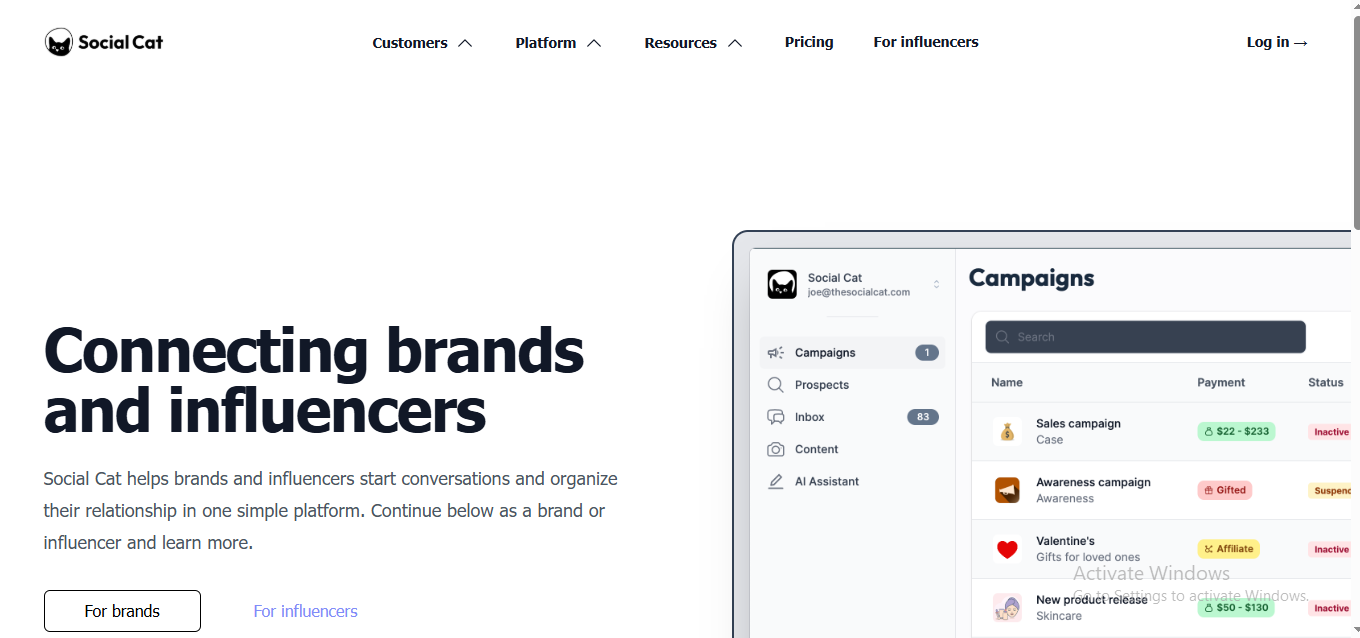
What I Loved:
OMG. Where has this been all my life?! The Social Cat is basically like Bumble but for brands and micro-influencers. And it’s cute AF. You sign up, create a profile, drop a campaign, and wait for verified content creators to slide into your DMs (not literally, but you get what I mean).
- It’s totally focused on nano and micro influencers—which means no crazy prices.
- The platform MATCHES you with creators (cue dating app vibes) based on niche, style, etc.
- I got content fast, and it felt way more organic than traditional outreach.
What I Didn’t Like:
- No campaign analytics or performance tracking. This is pure UGC and creator matchmaking.
- The database is still growing, so if you want a major TikTok influencer, you might not find ‘em here.
Pricing:
They have a free tier (love that for us) and then pay-as-you-go starting around $40/collab. Perfect for startups or solo marketers.
Verdict: Budget-friendly, chill, and super useful for grabbing UGC or trying creator marketing without breaking the bank.
Final Thoughts
Choosing the right influencer marketing platform is crucial for your brand’s success. Whether you’re a data-driven marketer, a relationship-focused brand, or an e-commerce powerhouse, there’s a platform tailored to your needs. Dive in, explore these options, and find your perfect match. Happy influencing!
- Best Datanyze Alternatives for 2025 - April 26, 2025
- Best Coldlytics Alternatives for 2025 - April 25, 2025
- Best Brevo Alternatives for 2025 - April 25, 2025
